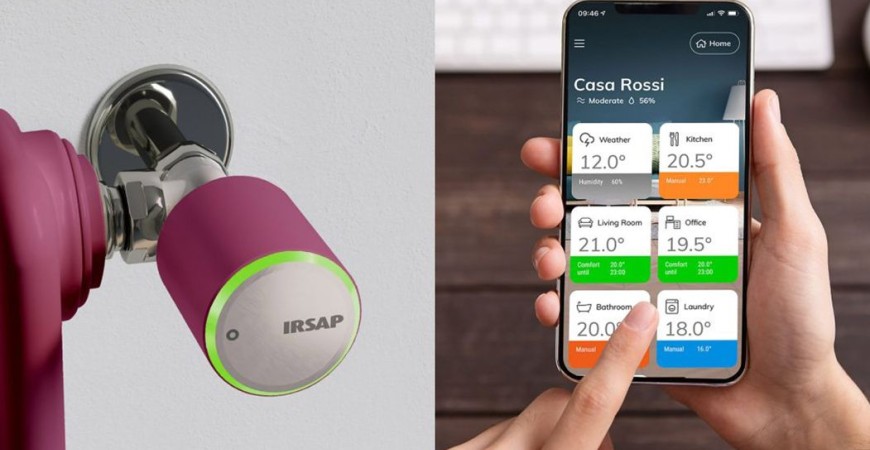Valves, lockshields and thermostatic heads: let's clarify
Thermostatic valves and heads are essential components of radiators that allow you to regulate the flow of hot water and the temperature within rooms.
These devices offer numerous benefits, including energy savings, customizable comfort and the ability to measure consumption fairly.
In this article, we will explore these components in detail, finding out how they work and what their benefits are.
What are valves?
Valves are taps that regulate the flow of hot water entering the radiators.
There are two types of valves:
- not thermostatic
- thermostatic
Non-thermostatic valves must be opened or closed manually to regulate the temperature of the rooms.
Thermostatic valves, on the other hand, can be adjusted according to the desired temperature thanks to the addition of a thermostatic head.
hirsap valves
How do thermostatic heads work?
Thermostatic heads are devices that are installed on radiators to regulate the flow of hot water.
These heads contain a drive "motor" that uses a thermostatic liquid to regulate the temperature.
When the room temperature exceeds the set temperature, the thermostatic liquid expands, moving an actuator that reduces the flow of hot water.
On the contrary, when the room temperature is lower than the set one, the thermostatic liquid contracts, increasing the flow rate of hot water.
Thermostatic heads offer numerous advantages:
1) allow you to reduce energy waste
2) improve comfort inside the rooms.
3) in apartments with central heating they allow you to measure individual consumption and establish a correspondence between actual consumption and the amount to be paid (if combined with a heat cost allocator).
thermostatic head
Rules for correct use of thermostatic heads
To ensure correct functioning of the thermostatic heads, it is necessary to follow some rules.
First, it is important to keep the heads free of obstacles, so that the temperature sensor can correctly detect the ambient temperature.
Furthermore, it is advisable to eliminate any objects that prevent air circulation near the radiator, such as curtains, furniture or radiator covers.
It is also important to avoid the presence of heat sources near radiators, such as ovens or stoves, as they could affect the functioning of the thermostatic heads.
During the change of air in the rooms, it is advisable to close the valves, in order to avoid wasting heat.
In the evening, it is advisable to lower the shutters to avoid heat loss.
During the summer period, it is advisable to leave the thermostatic heads set on the lowest temperature to avoid blockage due to limescale.
Certification of thermostatic heads
Certified thermostatic heads are important to ensure correct operation and avoid unnecessary costs.
Certified thermostatic heads meet a number of specifications, such as the opening and closing characteristic curve, the flow rate at different pressure differences, the influence of water temperature and temperature resistance.
Additionally, they undergo mechanical and thermal fatigue tests to ensure optimal performance.
Irsap is a manufacturer that offers certified thermostatic heads, with a universal M30 x 1.5 connection compatible with most valves on the market such as FAR, Giacomini, Caleffi and Danfoss.
Thermostatic valves and heads are essential components for regulating the flow of hot water and the temperature inside rooms.
By following some rules for the correct use of thermostatic heads, it is possible to obtain a significant improvement in the energy efficiency and comfort of homes.
By choosing certified thermostatic heads, correct functioning and optimal performance are guaranteed. Discover them on Acquaclick!


